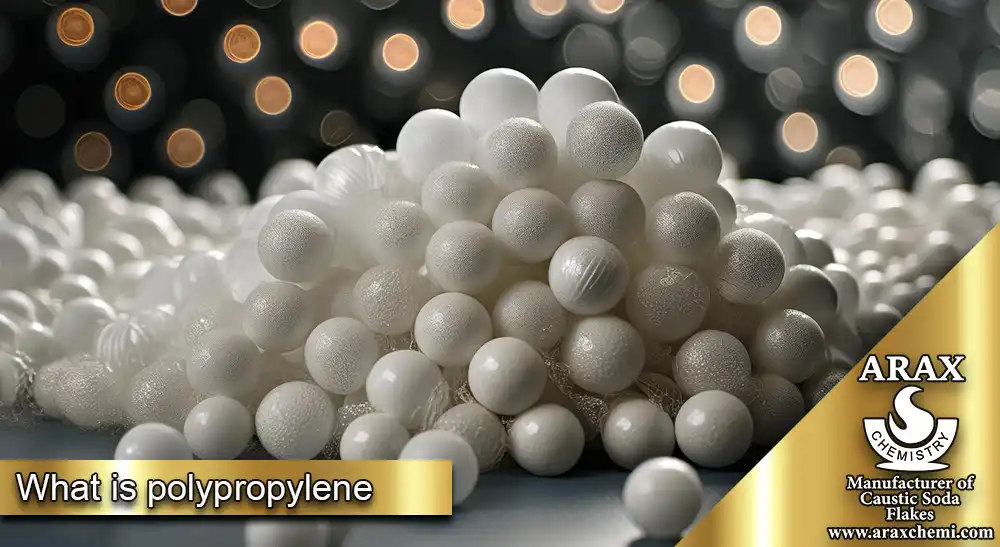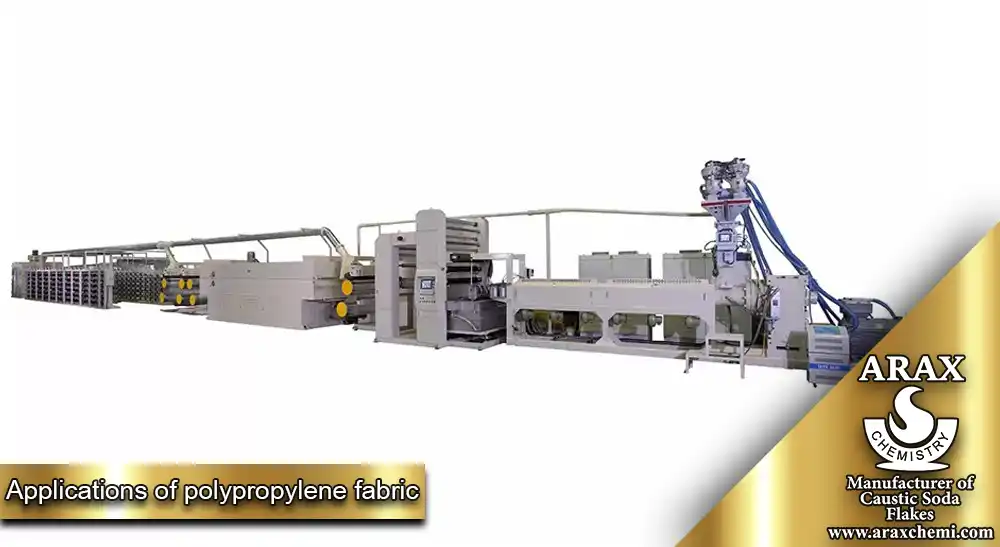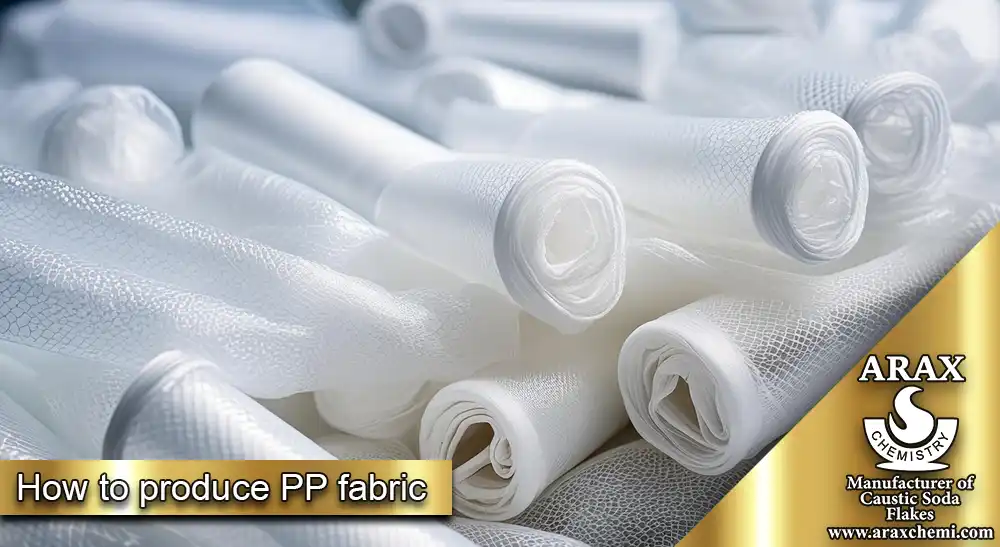In the textile and clothing industry, the use of polypropylene fabrics as one of the most popular and widely used raw materials is increasing day by day. Polypropylene is a structural polymer that is used to produce a variety of fabrics due to its unique properties such as lightness, resistance to water, heat, chemicals and good electrical properties. In this article, we will discuss comprehensively how to produce polypropylene fabric. At first, we examine the main stages of polypropylene fabric production, including preparation of raw materials, polymerization and spinning process. Then, we go into the details of different spinning techniques such as melt spinning and dry spinning and examine the advantages and limitations of each method. In addition, this article also deals with additives and compounds that are added to polypropylene to improve its properties and performance. Additives such as pigments, waterproofing agents, and UV-resistant materials offer more possibilities for the use of polypropylene fabric.
What is polypropylene?
Polypropylene or PP is a type of thermoplastic polymer that is made from repeating units of propylene. Propylene is a saturated hydrocarbon with the chemical formula (C3H6) and exists as a gas under standard conditions.
Due to its unique properties and characteristics, polypropylene is used in many different industries. Some of the features and advantages of polypropylene are:
- Chemical resistance: Polypropylene has a high resistance to acids, bases, organic solvents and water.
- Lightness and mechanical strength: Polypropylene is one of the lightest polymers and at the same time has high mechanical strength.
- Heat resistance: Polypropylene has good heat resistance and can work well at high temperatures.
- Recyclability: Polypropylene can be recycled and re-recycled, which is considered as an environmental advantage.

Polypropylene is used in various industries such as automotive, packaging, electronics, home appliances, sleeping industry and medical industries.
What is pigment?
Pigments are substances used as colorants in industry. They add color to fabrics and other materials and add a colorful look and appeal to them. Pigments can be available in various forms such as powders, fillers or granules.
Pigments are also used in the production of polypropylene (PP) fabric. These pigments are added to the polypropylene material to give the fabric a special and desired color. By using pigments, manufacturers can create more color variations in their PP fabrics.
The applications of polypropylene fabric using pigments in the packaging industry, clothes, furniture, carpets, spring clothes, sports clothes and many other things can be imagined. PP fabrics can bring vivid, diverse and high durability colors by using pigments, and as a result, attract the attention of customers.
Polypropylene fabric
Polypropylene fabric is a type of fabric made from polypropylene polymer. This fabric is light, cool, resistant to water and humidity, resistant to heat, resistant to chemicals, resistant to scratches and anti-aging. Also, it has the ability to accept color and resist UV rays. It is used in textile and clothing industry, bags, blankets, furniture and carpets. Polypropylene fabric is also known as a sustainable and recyclable material.
How to produce polypropylene fabric
As we said, pp fabric is made of polypropylene polymer. The production process of this fabric includes the following steps:
- Polymerization
- Polymer melting
- “Spinning” threading
- cooling
- Texture
- Post-cutting processes
Polymerization
Polymerization is a chemical process in which monomers are converted into longer chains and linked together to form a polymer. This process can happen in two forms, exothermic and neutral. In polymerization, monomer molecules are connected as chemical bonds and form longer, polymer chains.
Monomer: Monomers are single and simple structural units that form longer polymer chains by connecting to each other in the polymerization process.
polymer melting
In the polymer melting process, the solid polymer is affected by heat. As the temperature increases, thermal energy is transferred to the polymer and the polymer gradually turns into a liquid state. The temperature at which the polymer reaches and turns into a liquid state is known as the melting temperature of the polymer.
In the melt state, the polymer is a pourable and flowable material. This property of melting polymers provides them with many uses in industrial processes and production of plastic products. For example, after polypropylene is melted, it can be cast and shaped into various molds and molds or used in spinning and lamination processes.
Spinning
Molten polymer liquid is affected by tensile forces after passing through very small holes in the threading machine. These forces cause stretching and stretching of thin polypropylene threads. This process is called spinning.
In the threading machine, the molten polymer liquid passes through a fine nozzle. This nozzle has very small holes known as threading nozzle. By applying the appropriate tensile forces on the thin polypropylene yarns, they are pulled out of the nozzle and formed into thin polymer yarns. The fine polymer yarns coming out of the spinning machine can be used as raw materials for the production of polypropylene fibers, films, pipes, glass and other plastic products. This process, spinning, is used as one of the important methods of producing yarn and polymer fibers.
cooling
The polypropylene yarns obtained from the previous step are cooled under the influence of air or water to leave the melting state and turn into a solid state.
Texture
Cooled polypropylene yarns are used as the main elements in the weaving process. These yarns are woven in weaving machines to form the final fabric.
Post-cutting processes
After the fabric is woven, additional processes can be applied to it to produce certain characteristics in the fabric. Some of the post-slicing processes include:
- Dyeing: In this step, different colors are used to change the color of the fabric. This process can be done in the form of general painting, printing different patterns and designs, spray paint or digital painting.
- Pressing: pressing the fabric using heat and pressure makes the surface of the fabric smooth and removes existing wrinkles. This process improves the strength of the fabric and improves its appearance.
- Finishing the surface: In this step, chemicals and finishing products are used to make the surface of the fabric smooth and smooth. This process can be done as an additional step after pressing and helps to enhance dye absorption, stain resistance, waterproofing and other properties of the fabric.
- Polishing and anti-pilling: This operation is performed in order to prevent peeling, that is, the separation of fabric fibers from its surface. This process increases the fabric’s resistance to wear and repeated use by using chemicals and anti-pilling products.
Applications of polypropylene fabric
Polypropylene fabric is used in some different applications due to its special characteristics and properties. Some of the uses of polypropylene fabric are:
packing
Polypropylene fabric is used in the packaging industry due to its high resistance to breakage and tearing. Its applications include packing bags, large bags, waterproof covers and recycled bags.
Furniture and household industries
In the furniture and home industries sector, polypropylene fabric is used to produce outdoor furniture, garden furniture, catering services and water and stain resistant coatings.

Technical clothing
Due to its waterproof, stain-resistant and low absorbency properties, polypropylene fabric is used in the production of technical clothing. This includes protective clothing, work clothing, sports clothing, and rain clothing.
Food packaging industry
In the food packaging industry, polypropylene fabric is used as inner packaging for food products such as bread, vegetables, fruits and other food items. This fabric acts as protection to preserve freshness and improve the durability of food products.
Industrial molding and bagging
Polypropylene fabric is used as molding in various industries such as automotive industry, construction industry, steel industry and mining industry. Also, it is used as bagging for dry and particulate materials.
The difference between pp fabric and normal fabric
The important differences between polypropylene (PP) fabric and ordinary fabric are mainly related to the following:
Species and chemical composition
Conventional fabric is usually made from natural fibers such as cotton, cotton and cotton, cotton and polyester, while PP fabric is made from polypropylene, which is a thermoplastic polymer.
Physical properties
PP fabric has special properties such as high resistance to moisture, waterproof, stain resistance, resistance to breakage and tearing. In contrast, regular fabric can absorb moisture and may be more susceptible to water and stains.
Use in special circumstances
Due to its waterproof properties and high tear resistance, PP fabric is suitable for outdoor applications such as packaging, protective clothing and technical clothing. Ordinary fabric is used as everyday fabric and general clothing.

Comfort and breathability
Regular fabric, especially if it is made from natural fibers like cotton, has more breathability and comfort compared to PP fabric. PP fabric may in some cases restrict air exchange and breathability for wearing on the skin.
Ability to wash and maintain
PP fabric usually has better stain and dirt resistance and can be cleaned using simple washing methods. In contrast, ordinary fabric may require special care and washing.
In general, PP fabric is used in specific industrial and consumer applications due to its special properties, while regular fabric is used as a general and versatile fabric in various industries, including apparel, home embroidery, and decoration.
Felting with polypropylene
Production of polypropylene (PP) fabric is possible using advanced technologies and new methods in the textile industry. PP fabric is produced from polypropylene raw materials and is transformed by felting and matting methods. In the felting method, polypropylene yarns are bonded together by pressure and heat, and a non-woven fabric network is formed. This method is used to produce PP fabric with outstanding weight and high strength. In the braiding method, polypropylene is melted and injected in the form of thin threads, and then by forming a fibrous network, PP braided fabric is produced. This method is used to produce PP fabric with high filtration properties and resistance to fine particles. PP fabric with high strength, easy processing and usability in various industries is used as a suitable replacement for ordinary fabrics in many applications.

final word
The production of polypropylene (PP) fabric is possible through advanced technologies and new methods in the textile industry. The use of polypropylene raw materials and felting (spunbond) and meltblown methods in the production of PP fabric produces this type of fabric with special properties and applications such as outstanding weight, high strength, water and stain resistance, and high filtration properties. he does. This fabric is used in packaging industries, water-resistant clothes, automotive industries and medical industries.


